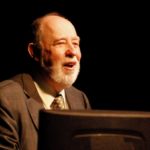What if checking the state of your arterial health were as simple as monitoring your blood pressure? New technology developed by Jonathan Maltz, a scientist in Berkeley Lab’s Molecular Biophysics and Integrated Bioimaging division, could make this a reality. Maltz came up with the idea of using sensors to detect the changes in the pulse pressure as blood flows through the brachial artery, a major vessel in the upper arm. Previous studies have shown a strong correlation between the health of brachial and coronary arteries. With initial funding from a Berkeley Lab Innovation Grant, Maltz developed an advanced prototype called the Engevity Cuff, which looks and feels much like a blood pressure monitor. He worked with UC San Francisco (UCSF) chief cardiologist Jeffrey Olgin and his team, who are conducting a major heart health study, to test the device on real patients. Last fall, startup company Lexington Biosciences licensed the technology to help further refine the device and bring it to the medical market.
Scientists Image First Steps in DNA Transcription
Working at temperatures near absolute zero, scientists at Berkeley Lab and UC Berkeley have captured images of proteins at work in the early steps of DNA transcription. Eva Nogales, a senior faculty scientist at in the Molecular Biophysics & Integrated Bioimaging Division, UC Berkeley professor of biochemistry and a Howard Hughes Medical Institute (HHMI) investigator, led the new study, published today in the journal Nature.
This latest research comes seven weeks after Nogales unveiled an earlier milestone using cryo-EM technology to image details of transcription factor TFIID in gene expression. Read the full UC Berkeley press release on the newest Nature paper.
Fleming Awarded the Faraday Prize
Graham R. Fleming, senior scientist in the Molecular Biophysics & Integrated Bioimaging Division, has won the Royal Chemistry Society’s Faraday Lectureship Prize 2016. The prize was awarded for experimental and theoretical achievements that have redefined the study and understanding of fundamental chemical and photobiological processes in liquids, solutions and proteins. A particular emphasis in Fleming’s research is photosynthetic light harvesting and its regulation via nonphotochemical quenching.
Lab Startup CinderBio Featured in Newsweek
Startup CinderBio, founded by Molecular Biophysics & Integrated Bioimaging researchers Jill Fuss and Steven Yannone, was recently featured in Newsweek. Giving some background about the use of enzymes throughout history, the article describes how the company offers biodegradable enzymes that operate at higher temperatures and more acidic conditions than currently available enzymes. When used in biofuel production and industrial cleaning, the heat- and acid-tolerant properties of these enzymes allow for more efficient and affordable processes.
Doudna Named Foreign Member of UK’s Royal Society
Jennifer Doudna, biochemist faculty scientist in Molecular Biophysics & Integrated Bioimaging, has been named a foreign member of the prestigious Royal Society. Doudna, who is also a professor of molecular and cell biology and of chemistry and a Howard Hughes Medical Institute investigator, was honored for “her work on CRISPR-Cas9 gene editing technology that is revolutionizing the fields of genetics, molecular biology and medicine.” She is one of 10 new foreign fellows and 50 new fellows who will be joining many of the world’s most eminent scientists in this scientific academy, which is dedicated to promoting excellence in science. Read the Royal Society announcement.
- « Previous Page
- 1
- …
- 67
- 68
- 69
- 70
- 71
- …
- 78
- Next Page »
Was this page useful?








